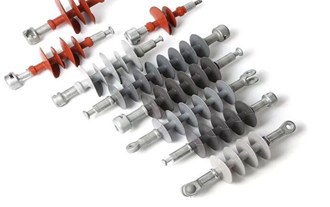I. Basic Concepts and Requirements of power transmission line hardware
Cable accessories: a collective term for various cable terminations and connectors in Power Line Fittings.
Cable terminal: A device installed at the end of a cable line and connected to overhead lines or electrical equipment.
Cable connector: A device that connects cables to each other.
1. Basic requirements
The core connection is better:
The contact resistance should be small and stable, able to withstand the impact of fault current, and the resistance of the joint during operation is not greater than 1.2 times the resistance of the cable core itself.
2.Insulation performance
The compressive strength of the accessory insulation should not be lower than the cable itself, and the dielectric loss should meet the corresponding national standards and manufacturer requirements; the outdoor part should also be considered to be able to operate safely under severe weather conditions.
3.Sealing performance
For medium and low voltage cable accessories, since XLPE insulated cable accessories are mostly silicone rubber insulators, the main role of sealing at the same time is to prevent moisture and conductive media from immersing inside the insulation during operation, causing tree branch discharge and other hazards. For extra-high-voltage cables, such as XLPE insulated cables of 110kV and above voltage levels, sealing not only has the above-mentioned effect, but also plays a key role in preventing leakage of oil inside the accessories.

Silicone Rubber Insulators
4.Good mechanical strength
The accessories are subject to many external forces during installation and operation, such as man-made internal forces, electric forces, etc., especially for cable accessories with voltage levels above 110kV, cable retraction, elasticity, etc., also place higher requirements on the accessories themselves.
The role of the insulation layerInsulation is the key structure to reliably isolate the high-voltage electrode from the ground electrode
1. Withstand the long-term effects of working voltage and various overvoltages, so its electric strength and long-term stability are the most important parts to ensure that the entire cable completes the power transmission task
2, can withstand the thermal effects of the heating conductor to maintain the proper electrical strength
The role of the insulation shield:
It is guaranteed to be in close contact with the insulation, which overcomes the weakness of the air gap caused by the close contact between the insulation and the metal, and shields the air gap from the working field strength. This technology is also commonly used in the production of accessories.
The role of the metal shield:
1. The low-voltage electrode that forms the working electric field will also form a strong electric field when there are local burrs, so it is also necessary to try to make the conductor surface as smooth and complete as possible without burrs;
2. Provide the path of capacitor current and fault current, so there are certain cross-section requirements.
The role of the protective layer (inner and outer sheath, armor):
It is an important guarantee for the protection of the insulation and the normal and reliable operation of the entire cable. It is designed with a corresponding protective layer structure for various environmental conditions of use. It is mainly mechanical protection (longitudinal and meridional external forces). , You can make various combinations as needed.
+86 319 878 9350
+86 156 1304 7999
+86 319 878 9350
NanYan, DongHuan Road, Shahe, Hebei China
Copyright © Hebei Yipeng Line Equipment Co., Ltd. All Rights Reserved. | Sitemap Powered By 
